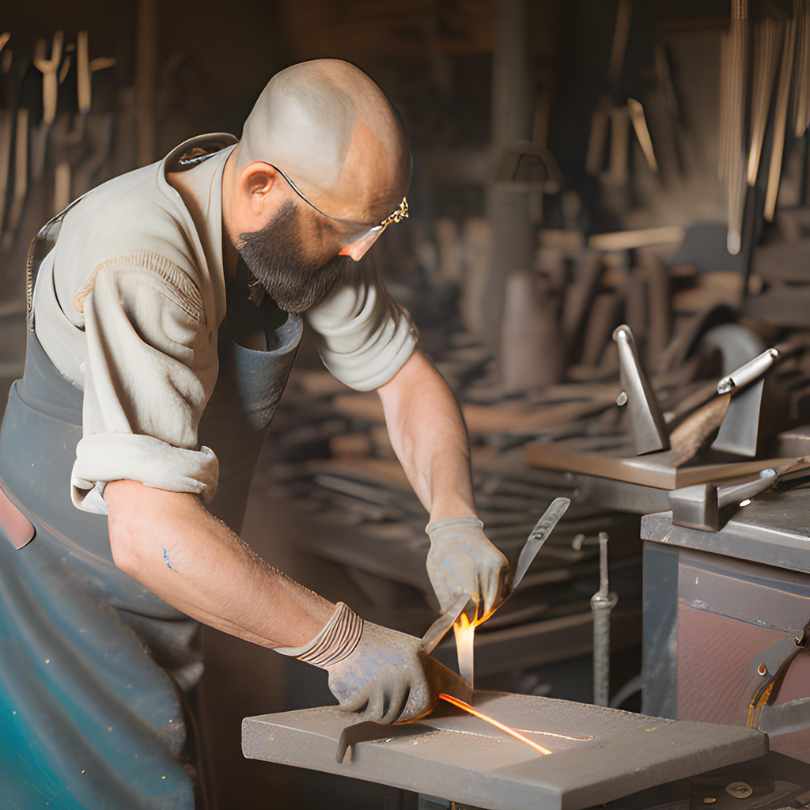Have you ever been fascinated by the process of shaping and transforming metal as a blacksmith? Forging is an art form that invites us to explore a plethora of techniques and methods. One such essential technique is drawing out – the process of lengthening and thinning metal. To help you take your forging skills to new heights, we've crafted a comprehensive guide detailing various techniques to master the art of drawing out, perfect for the beginner blacksmith. Keep reading to elevate your blacksmithing journey.
Anvil Face Technique: A Foundation for the Basics
The Anvil Face drawing method is the least effective way of drawing out. However, it serves as a foundation for understanding the basics. This technique is primarily used for straightening and flattening objects rather than for extensive drawing out.
Bic Technique: A Step Up in Concentrating Power
The Bic technique is more effective compared to the Anvil Face method. As it utilizes the rounded back, power concentration becomes more efficient, further enabling faster material movement. However, it is essential to bear in mind that the Bic has a large radius, which determines its power concentration properties.
Hardie Hole Tool (Fuller Tool) Technique: Customization at Its Finest
The Fuller Tool technique allows for efficient material movement and provides customization based on project requirements. This tailor-made solution makes it highly versatile. However, a notable downside is the potential energy loss during each hammer blow. This occurs due to the tool being loose in the Hardie hole.
Peen Hammer Technique: Fuller Tool's Close Competitor
The Peen Hammer technique delivers similar effectiveness as its counterpart, the Fuller Tool, in achieving swift material movement. While this method involves a large surface being connected to the Anvil's face, it is important to note that this also results in a rapid cooling process. The material cools faster because the Anvil draws heat from the piece, which limits the amount of forging that can be done in each heat.
The Edge of the Anvil Technique: The Forger's Best Friend
The most effective and frequently used technique involves the use of the Anvil's edge, which is the most effective of drawing out techniques. Shaping the edge in different radii based on the project's requirements allows for versatility and adaptability. Furthermore, it provides a solid grounding for energy optimization and ensures minimal contact with the heated material. This property helps retain heat longer, making it possible for swift material movement.
Conclusion
As a forger, understanding and embracing these techniques will significantly enhance your forging skills, and all of them have its place. With this comprehensive guide by your side, you're now prepared to master the art of drawing out. So, ignite your forge and begin shaping metal like never before. Happy forging!

